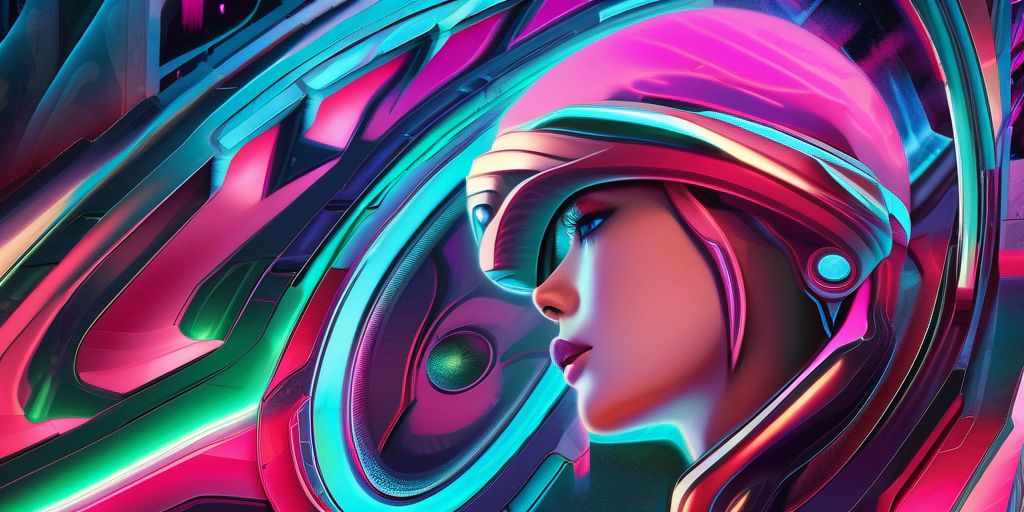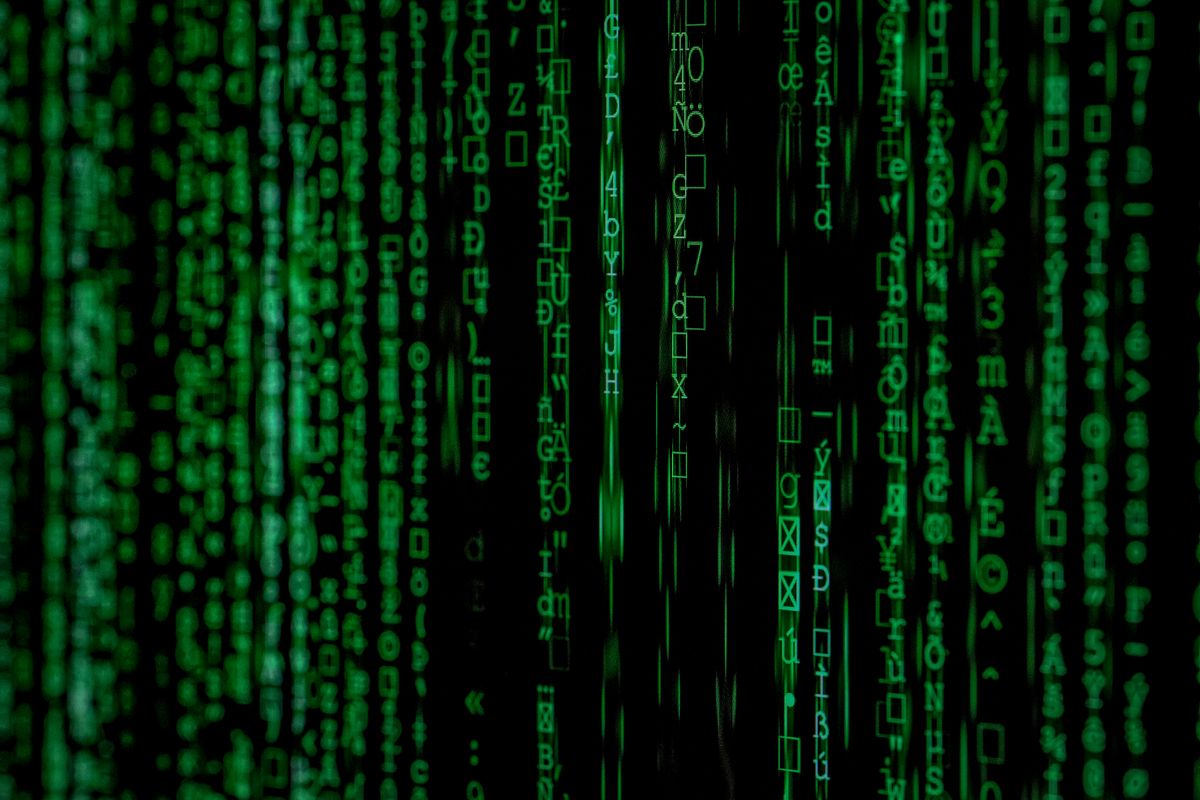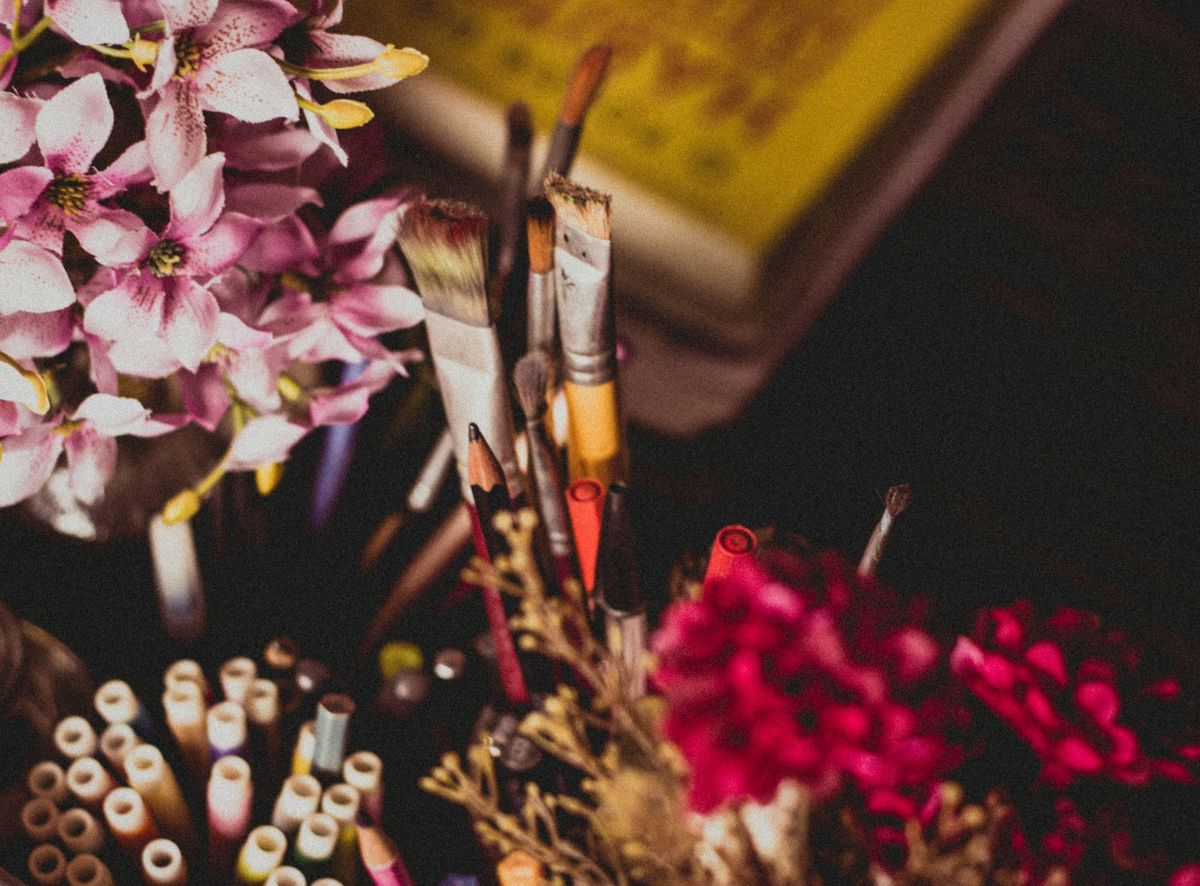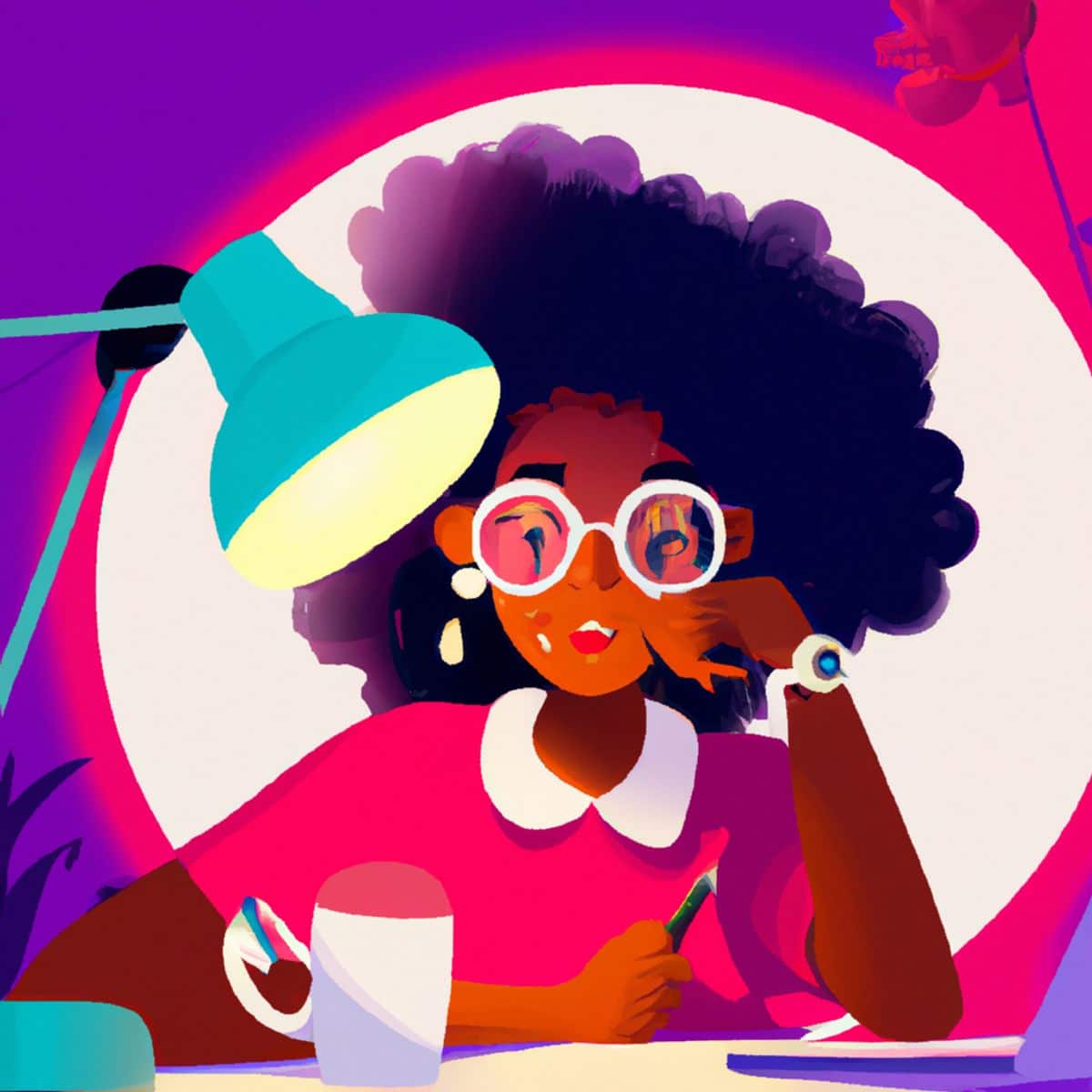Digital art has revolutionized the way we perceive, create, and share art. In the world of 2D digital art, artists have embraced new tools and techniques to create captivating visuals. From traditional to digital, this article explores the evolution of 2D digital art, the techniques and styles used by digital artists, their role in the entertainment industry, and the challenges and opportunities they face. Here are the key takeaways:
Table of Contents
ToggleKey Takeaways
- 2D digital painting closely replicates traditional painting techniques and provides a realistic experience.
- Pixel art emerged as a necessity in the early days of gaming and is characterized by blocks of color.
- Digital artists play a crucial role in animation, character design, concept art, and illustration in the entertainment industry.
- Mastering digital tools, balancing creativity and technical skills, and building an online presence are important for 2D digital artists.
- Digital art offers limitless creative freedom, versatility, and efficiency compared to traditional art forms.
The Evolution of 2D Digital Art
From Traditional to Digital
The evolution of 2D digital art has transformed the way artists create and express themselves. With the advent of digital tools, artists can now seamlessly blend traditional techniques with modern technology, opening up new possibilities for artistic exploration. Digital painting has become a popular technique, allowing artists to create stunning and realistic artworks using digital brushes and textures. Additionally, vector art has gained popularity for its scalability and clean lines, making it ideal for illustrations and graphic design. Another technique that has emerged is pixel art, which pays homage to the retro aesthetics of early video games. Artists can also experiment with mixed media, combining traditional and digital elements to create unique and visually striking pieces. The transition from traditional to digital art has not only expanded the artistic process but has also broadened the range of styles and techniques available to artists.
Advancements in Digital Tools
Technological advancements have greatly influenced the world of 2D digital art, providing artists with a wide range of tools and techniques to explore. One important tool is rendering and compositing, which is commonly used in animation and visual effects (VFX) to create realistic or fantastical scenes. Another essential tool for digital artists is photo editing software, such as Adobe Lightroom and Photoshop, which allow for precise adjustments and enhancements to photographs. These advancements have revolutionized the artistic process, allowing artists to push the boundaries of their creativity.
Impact on the Artistic Process
The evolution of 2D digital art has had a profound impact on the artistic process. With the advancement of digital tools, artists now have more flexibility and freedom to experiment with different techniques and styles. This has led to the emergence of new and innovative art forms, such as digital painting, vector art, pixel art, and mixed media. Artists can now seamlessly blend traditional and digital elements to create unique and visually stunning pieces. The use of digital tools has also streamlined the artistic process, allowing artists to work more efficiently and make revisions easily. Overall, the impact of 2D digital art on the artistic process cannot be overstated.
Techniques and Styles in 2D Digital Art
Digital Painting
Digital painting is one of the examples of digital art that tries to emulate oil paints, pastel, and watercolor paintings. Artists can use art tools like Adobe Photoshop, Clip Studio Paint, Krita, or Procreate with a stylus on a tablet or a drawing tablet plugged into a computer. It allows artists to create stunning masterpieces by turning real-life scenarios into digital artworks. The use of color is a vital aspect of an artist’s signature style in digital painting, from subtle color grading details in portraits to bold color contrasts in abstract pieces. Your unique voice and style are what set your work apart in the digital art world. Whether you are creating logos, digital art pieces, or 3D models, your personal touch breathes life into every piece of art you create.
Vector Art
Vector art is a style of digital art that consists of geometric forms and straight lines that are filled with color and design using mathematical algorithms. The artist has a lot of flexibility in adjusting and modifying things like shadows, transparency, and groups.
Pixel Art
Pixel Art is a type of digital art that arose out of necessity at the time when games required visuals but were run on hardware that was incapable of displaying large or complex images. The digital art style is composed of big blocks of color (called pixels), often with limited color palettes, and each item is confined to a maximum size of 8×8 pixels, 16×16 pixels, 32×32 pixels, and so on.
- Pixel Art is characterized by its retro and nostalgic aesthetic, reminiscent of early video games.
- Artists who create Pixel Art often use specialized software or pixel art editors to create their artwork.
- The limited resolution and color palette of Pixel Art require artists to be creative in conveying details and emotions within these constraints.
Tip: When creating Pixel Art, remember to pay attention to the placement and arrangement of pixels to create a visually appealing and cohesive image.
Mixed Media
Blending traditional and modern elements, 2D digital artists often create unique, mixed media pieces or aesthetic mash-ups. Their artistic background and education, such as training in traditional painting techniques or animation, shape their approach to digital art. Some artists gravitate towards digital portrait painting or photo painting, while others excel in creating dynamic 2D or 3D animation. Personal style and creativity play a significant role in the work of 2D digital artists.
In addition to their artistic skills, 2D digital artists also benefit from a strong understanding of digital tools and software. They use a variety of programs and applications to bring their ideas to life, including digital painting software, vector graphics software, and pixel art editors. By mastering these tools, artists can achieve the desired effects and create visually stunning artwork.
Table:
| Software | Purpose |
|---|---|
| Photoshop | Digital painting, photo editing |
| Illustrator | Vector graphics, logo design |
| Procreate | Digital painting, sketching |
| Aseprite | Pixel art, animation |
Blockquote:
Experimentation is key in mixed media art. Don’t be afraid to combine different techniques and materials to create something truly unique. Let your creativity guide you and explore new possibilities.
With the rise of social media and online platforms, 2D digital artists have more opportunities than ever to showcase their work and connect with a global audience. Building an online presence through websites, social media profiles, and online art communities allows artists to gain exposure, receive feedback, and even sell their artwork. It’s important for artists to actively engage with their audience and stay up-to-date with the latest trends and techniques in the digital art world.
In conclusion, mixed media is a fascinating aspect of 2D digital art that allows artists to combine traditional and modern elements to create unique and visually stunning pieces. With their artistic skills, knowledge of digital tools, and online presence, 2D digital artists are making a significant impact in the art world.
The Role of 2D Digital Artists in the Entertainment Industry
Animation and Visual Effects
In the entertainment industry, 2D digital artists play a crucial role in bringing visual concepts to life. From animation and visual effects to character design and concept art, their work shapes the immersive experiences in animation, film, and video games. These artists utilize a variety of techniques and styles to create captivating visuals, including digital painting, vector art, pixel art, and mixed media. Their ability to blend creativity with technical skills is essential for producing compelling and visually stunning content. Additionally, 2D digital artists contribute to the development of online platforms and virtual reality experiences, expanding the boundaries of artistic expression in the digital realm.
Character Design
Character design is a crucial aspect of 2D digital art. It involves visualizing and designing characters for various industries such as gaming, film, and animation. The character design process requires a combination of creativity and technical skills to bring unique and memorable characters to life. Attention to detail is essential in capturing the personality, traits, and emotions of the characters. Additionally, character designers often collaborate with other professionals, such as concept artists and animators, to ensure the characters fit seamlessly into their respective projects.
Concept Art
Creating visual concepts and illustrations using digital tools for various purposes, including character design, book covers, editorial illustrations and digital art. Concept artist: Visualizing and designing characters, environments and objects for industries like gaming, film and animation during the early stages of creative development. UI/UX designer: Designing visually appealing and user-friendly interfaces for websites, applications and software to enhance the overall user experience. Game artist: Creating digital assets, including characters, environments, textures and animations, for video games to contribute to the visual elements of the gaming experience. Medical illustrator: Using digital tools to create visuals that explain concepts and processes in the medical field.
Illustration
Illustration is a form of visual artwork created using digital tools such as graphic tablets, stylus pens, and illustration software like Adobe Illustrator and Photoshop. It encompasses various styles and techniques, allowing artists to create and manipulate images on a digital platform. Digital illustration provides flexibility and opportunities for experimentation. One popular technique in digital illustration is the use of the Pen Tool in Adobe Illustrator. The Pen Tool allows for precise results and is useful for accurately tracing shapes and creating intricate details. It is a versatile tool that can be used for a wide range of illustration styles.
Challenges and Opportunities for 2D Digital Artists
Mastering Digital Tools
To become a proficient 2D digital artist, it is essential to master the digital tools at your disposal. Familiarize yourself with the latest digital art software and hardware, such as Adobe Creative Suite, Procreate, or 3D modeling programs, to expand your creative capabilities. Experiment with different brushes and settings to find the ones that suit your style best. Additionally, stay informed about industry trends and build relationships with peers and collectors. Seek constructive criticism to gain insights into your work and identify areas for improvement. Dedicate time to hone your skills through deliberate practice, setting specific goals and challenging yourself to improve in targeted areas.
Balancing Creativity and Technical Skills
Balancing creativity and technical skills is a crucial aspect of being a successful 2D digital artist. While creativity fuels the artist’s imagination and allows for unique and innovative ideas, technical skills are necessary to bring those ideas to life in the digital realm. Finding the right balance between these two elements is essential for creating visually stunning and technically proficient artwork.
One approach to achieving this balance is through continuous learning and practice. By staying updated with the latest digital art tools and techniques, artists can enhance their technical skills while still nurturing their creative abilities.
Another important aspect is time management. Allocating time for both creative exploration and technical execution ensures that the artist can fully explore their ideas while also meeting project deadlines and client expectations.
Additionally, collaborating with other artists and professionals in the industry can provide valuable insights and feedback. This collaborative environment allows artists to learn from each other’s strengths and weaknesses, further enhancing their creative and technical skills.
Navigating the Competitive Market
Navigating the competitive market as a 2D digital artist can be challenging, but with the right strategies, you can stand out and find success. Here are some tips to help you navigate the competitive market:
- Stay informed about industry trends and build relationships with peers and collectors.
- Practice regularly and deliberately to hone your skills and improve in targeted areas.
- Seek constructive criticism from trusted mentors and peers to gain insights and identify areas for improvement.
- Familiarize yourself with the latest digital art software and hardware.
Remember, finding freelance opportunities and markets is also crucial. Consider platforms like Upwork, Fiverr, or Behance to start your freelance career. Selling artworks on platforms like Etsy or Society6 can also be a great way to showcase and monetize your art. Networking, both online and offline, is key in the freelance world.
Important Tip: Building a unique style and consistent artistic voice can help in building your brand identity.
Building an Online Presence
Building an online presence is crucial for 2D digital artists to showcase their work, connect with potential clients, and establish their brand. Here are some key strategies to consider:
Consistency in Style: Developing a unique style and artistic voice helps in building your brand identity.
Freelance Opportunities: Explore freelance platforms like Upwork, Fiverr, or Behance to find potential clients and projects.
Selling Artworks: Consider platforms like Etsy or Society6 for selling prints or digital copies of your artwork.
Networking: Engage in online and offline communities to connect with other artists, share experiences, and learn from each other.
Remember, building an online presence takes time and effort, but it can greatly expand your reach and opportunities in the digital art industry.
Challenges and Opportunities for 2D Digital Artists
Conclusion
In conclusion, the world of 2D digital art is a vibrant and ever-evolving landscape that offers endless possibilities for artists. From 2D digital painting to pixel art and digital illustration, artists can explore diverse styles and techniques to create captivating and unique artworks. The use of digital tools provides artists with limitless creative freedom, allowing them to experiment and push the boundaries of artistic expression. As technology continues to advance, the digital art industry will continue to grow and offer new avenues for artistic exploration. So, whether you’re a newbie or an experienced artist, dive into the world of 2D digital art and unleash your creativity!








